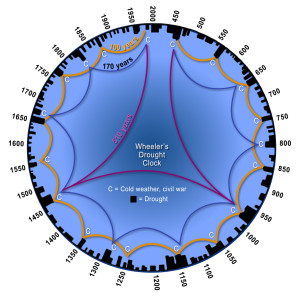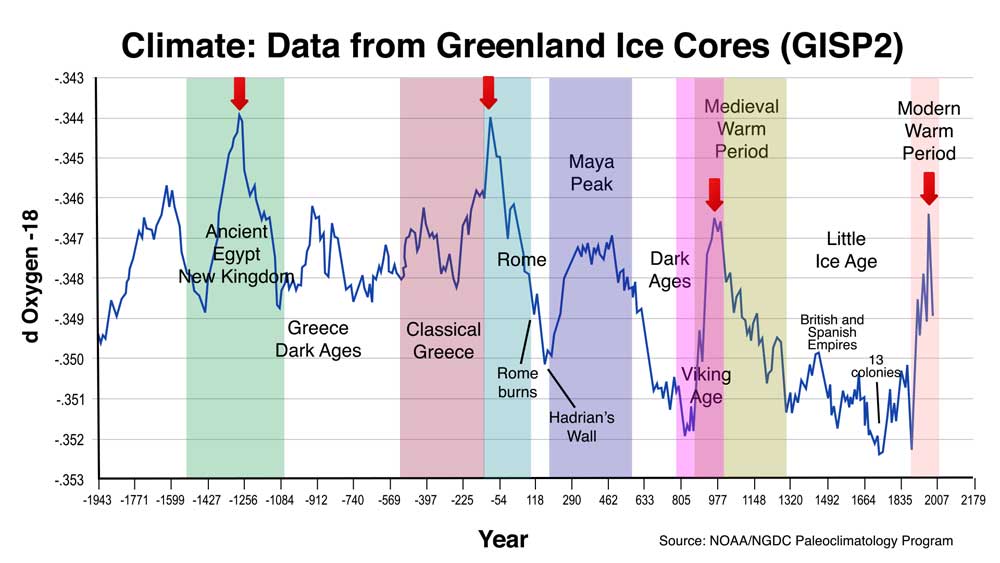December 29, 2013
 Offline
OfflineThe majority of people run away from conflict. They simply don’t want like confrontation. Any situation has to get to an unmanageable level before the herd will react and actually turn and fight. Of our three basic human instincts (fight, flight, or freeze), with what I’ve learned throughout my life is that “fight” is the last resort. The herd would rather bury their head in the sand, rather than do anything about the problem.
However, having built a couple of successful companies from the ground up, I’ve learned that confrontation and communication, although often uncomfortable at first, always end up getting you to a better place, even if you end up agreeing to disagree.
So it is with the coming crash and burn scenario we’re currently rushing towards. People say we could have stopped it, but that simply isn’t human nature and, if you’re like me and believe that we’re influenced exogenously (from beyond the confines of the Earth’s atmosphere), then operating above our basis instincts may not be possible at all … ever.
All that said, the destruction of the American oligarchy is playing out as predicted … on television and on the internet … for all to see … and hopefully learn from.
The good news is that the conflict, despair, and devastation that’s about to come our way always has a happy ending. It has always resulted in the advancement of democracy and a better world all round, for everyone except the oligarchs. It may not happen in my lifetime, but it will happen. History rhymes.
Dr. Raymond H. Wheeler (1892-1961) developed “The Drought Clock” (on the left—click to expand) to forecast recurring droughts, which coincide with colder climates. He found that every 170 years, the climate would turn colder and dryer, social mood would turn negative, civil wars would proliferate, and the economy would suffer from financial collapse. Larger cycles of 515 and 1030 years heralded ever larger and longer drought periods.
Although he completed his work during the 1930s, 40s, and 50s, he was able to accurately forecast the second half of the 20th century, based upon the cycles that occurred over and over again like clockwork from 600 BC through today.
The Drought Clock shows shorter 100 year cycles of cold and dry which are compounded by the larger degree 170 year cycle, when they happen at the same time. You can see that he forecast the start of a cold, dry 170 year cycle just before the year 2000.
Major 515 Year Cycles
The climate of the earth shifts from warmer to colder periods and back again, frequently in rhythms (cycles). History shows that nations are built on shifts from cold to warm. However, Nations crumble when the Earth’s climate shifts from warm to cold. International wars are mostly warm, civil wars are cold. Each phase, warm and cold, begins wet and ends dry. Cold droughts and civil war epochs generally coincide. A major cold drought and series of civil wars occur about every 515 years; generally less severe ones every 170 years. There are also shorter rhythms (100 years and 25 years, for example). Totalitarianism is typical of late half warm periods; democracy is revived during cold times.
Each of the revolutions of history, marked by the death of an old world and the birth of a new one, has been characterized by a great advance in democracy. Dr. Wheeler studied the period beginning at around 600 BC, because this is the start of reliable human history and climate records from ice cores and tree rings. His lifetime of work recording temperature and rainfall, and then correlating them with major events right through until 1940 is often breathtaking in the secrets about it uncovers about how the cycles of history play out. We’ll begin with Sparta.
In the early days of Sparta (prior to 600 BC), a famous lawmaker, Lycurgus, set up a democracy. Over time, however, it failed. Constitutional government gradually became a farce. The people were not allowed a voice; only state officers spoke at assemblies. Voting was done by acclamation. Young Spartans began their careers as soldiers and spent their whole lives in the employ of the state. Tyranny had taken hold once again, as it always does as the temperature increases. Sparta had become a city-state.
Nonetheless, Sparta had become a great force in the world. However, she found it more and more difficult to maintain the strength of the army. Graft and waste destroyed the public treasuries and led to bankruptcy. Sparta eventually disappeared from the scene. The climate had turned colder.
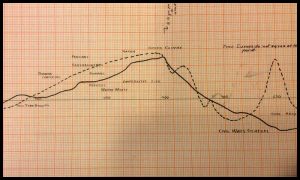 400 BC Cycle Top – The End of the Spartan Dynasty
400 BC Cycle Top – The End of the Spartan Dynasty
(Click to expand any of the charts on this page)
Greek democracy, which was the beginning of our current political form, began in the 6th century BC. Solon (638-558 BC) is believed to have set up the foundations for democracy out of chaos. It took over another century before it really began to take hold.
Pericles (495-429 BC) was a prominent Greek statesman, orator, and general in Ancient Athens. He was at the helm of a Golden Age, where arts and literature were promoted. He began the building of the Acropolis. He built a democratic government to such an extent that he was called a “populist.”
However, over the rest of this cycle (once it turned colder around 400 BC), the political system began to move towards socialism. Alexander the Great revived the prominence and power of Ancient Greece through expanding its territory (during a short-term warm period). After his death though, Greece declined into decay (civil wars ran rampant) and was eventually overtaken by Rome. This was at the cold trough of the 500 cycle at about 146 BC, when Roman conquered Greece at the Battle of Corinth.
As it grew warmer, the Roman Empire grew stronger until the climax during the rule of Julius and Augustus Caesar. The height of the climate cycle (the warmest point) was also the height of the Roman Empire.
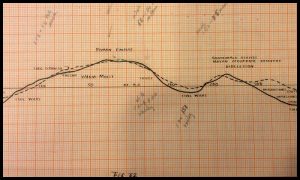 100 AD Cycle Top – The Top of the Roman Empire
100 AD Cycle Top – The Top of the Roman Empire
The first major cycle of modern recorded history ended with the birth of Jesus (approx. 4BC – 33AD. Rome was past its cultural prime. An old world was dying and over the next several hundred years, a new world began to take shape.
The birth of Jesus marked the beginning of the new 515 year cycle and sparked a revolution that emphasized the importance of individual life and conscience.The birth of Christianity sparked one of the most profound cultural revolutions in all of history.
The Roman Empire went into decline as the temperature turned colder. By the time the bottom of the cycle has been reached, the Roman Empire had been split in two, Hadrian’s wall was being constructed to keep out the Huns, and treasuries were all but bankrupt through the expense of constant wars and the raising of minimum wages for the army (which proved to be the the final straw).
I’ve written more specifically about the decline of the Roman Empire in a previous post here, showing the parallels between then and now.
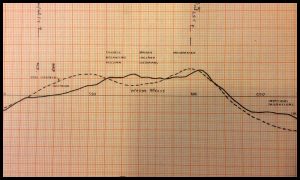 600 AD Cycle Top – The Byzantine Empire and Islam (Muhammad)
600 AD Cycle Top – The Byzantine Empire and Islam (Muhammad)
In this revolution, slavery as it had been practiced since Egyptian times, came to an end and serfdom took over. Serfdom was a much higher form of slavery and included new freedoms that had not been allowed before.
The top of the cycle marks the time of Muhammad (570-632 AD) and the founding of Islam, who was instrumental in uniting the Arabian world, and contributed greatly to an upsurge in the Arabian civilization.
600 AD began the first half of the Medieval (Middle Ages) period and lasted through the 10th century. Justinian (482-565), often called the last Roman Emperor, began the great Byzantine empire. During the reign of Maurice (r. 582–602), the Empire’s eastern frontier was expanded and the north stabilised. However, his assassination caused the Byzantine–Sasanian War of 602–628, which exhausted the Empire’s resources and contributed to major territorial losses during the Muslim conquests of the seventh century. In a matter of years the Empire lost its richest provinces, again as the temperature turned markedly colder.
China and Japan also went through a major cultural shift during this period.
Charlemagne (742-814 AD) arose in the west of Europe (during a later temperature high culminating at about 900 AD) and the Golden Age of Bagdad dominated in the East. The close of this 515 year cycle saw all of these great civilizations in decline.
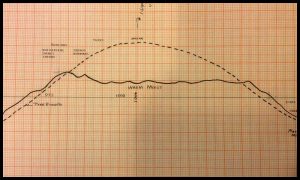 1000 AD Cycle Top – The Printing Press
1000 AD Cycle Top – The Printing Press
The printing press was invented at around 1440, and began a new cycle (just as the internet is playing a part now in the roll-over into a new way of thinking and eventually, a greater democratically-aligned world).
Feudalism began to spring up in Europe. This revolution saw the rise of the merchant class. The theory of justice became widespread, and together with loyalty, formed the basis of feudalism. Constitutional government had its beginnings in this cycle.
This cycle saw the birth of England, Scotland, Denmark, Norway, Sweden, Russia, France, and Germany. But the greatest rise was in Asia, with the empires of Genghis Khan and the emergence of the Seljuk Turks, and later in the 14th century, Tamerlane.
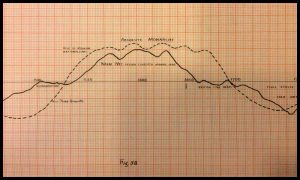 1600 AD Cycle Top – The Death of Feudalism
1600 AD Cycle Top – The Death of Feudalism
Absolute monarchy began to suffer during the early stages of this new cycle. The end of the warm period led to the Renaissance, which began in Italy and rapidly spread to the rest of Europe. The Reformation, or break from the Roman Catholic Church began at the same time in Germany and spread throughout the world at that time.
The revolution of the 16th century brought on tremendous advances in democracy. There was much more religious freedom. In spite of the Inquisition, modern science eventually won out. The power of kings under divine right began to diminish.
Local languages sprung up, allowing much more self expression, versus the domination of Latin before that time. Music became a major force with an underlying theme of freedom.
Above is the civilization chart I created based upon data that comes from the National Oceanographic and Atmospheric Administration—from the Greenland Ice Core Research project ending in 1992. Ice cores are an extremely accurate method of determining temperature back through the centuries. You can see the large temperature peaks every 1030 years – the red arrows. These extremely warm and wet periods supported bountiful crops and major societies grew to the height of their power. There are shorter periods of approximately 515 years that show smaller spikes in temperature. A good example is the Mayan peak at approximately 600 AD.
The 2000 AD Cycle Top – The End of the American Empire
As we move through this new revolution, the new world that develops will once again become “the people’s world.”
It is as the cold periods take hold and terminate the previous 500 year cycle that we begin to see democratic institutions spring out of the societal ashes. History doesn’t repeat; it rhymes. The changes will happen in unexpected ways, but they always usher in a better world for all in the end.
We’re starting to see the shift of power from west to east, as the dominating power, the United States sets into decline and China begins to rise in prominence. Each successive 515 year cycle sees the dominant power shift from east to west and then back again for the next cycle.
All of these major cycle tops swept in revolutions that involved a rising up of the oppressed against the upper class. The slaves and serfs each time had been at the mercy of a small, controlling class of the one percent. This upper class had collected all the money they could siphon out of the society of the time and left the middle classes practically destitute. Today’s bubbling unrest should be no surprise. It’s happening all over the world. The story is the same as it’s always been at the end of every 515 year cycle.
Every single one of these major cycles ended with mass migrations. Of course, you can see this phenomenon take place again throughout Europe.
During warm times, there’s an extension of state security measures. This is an integral part of the larger trend towards Statism and the loss of freedom. Today was are losing our freedom in so many ways. You just have to attempt to get on an airplane to feel the oppression and lack of freedom in the world today. Communism and socialism are the fears during warm times; unfair competition and anarchy are prevalent during cold times.
A great social upheaval always accompanies a turn from warm to cold. However, when society restructures and the lower classes regain control, when the degree of government gets back to a “just right” level, we will again experience a Golden Age—a time when it will be prosperous for all once again—when we again transition from a cold period back to a warm one once again.
Dr. Wheeler predicted the “new Renaissance” would take hold about the year 2000:
“The world is approaching again the heat climax of the 1000 year cycle. In fact, if this is true there is reason for believing that around 2040, perhaps a little earlier, perhaps a little later, a heat climax will occur that will exceed our recent one of the 1930s. This might well be the climax of the current 1000 year cycle. After that, glaciers will start advancing again and the world’s temperatures will fall, gradually, until a cold climax is reached around 2500 AD. Then the modern world will again experience and upheaval as complete as that which terminated the Middle Ages and inaugurated the modern world.”
Buckle up. Things are about to get even crazier. We’re watching the destruction of an oligarchy and a plan by the financial elite of the world to take total control of the world’s population through the control of our money. However, if you’re a student of history, and in particular, of cycles, you know that simply is not going to happen.
Welcome world, to the financial revolution … once again.
Most Users Ever Online: 75
Currently Online:
2 Guest(s)
Currently Browsing this Page:
1 Guest(s)
Top Posters:
houseflii: 19
Platy: 14
tedward728: 4
Lon Kaufmann: 2
Joe Longwill: 2
Newest Members:
Latheri Babu
Ket chittibabu
ola Mail
Jack Swift
Jake Swift
Forum Stats:
Groups: 5
Forums: 24
Topics: 106
Posts: 179
Member Stats:
Guest Posters: 1
Members: 1345
Moderators: 2
Admins: 1
Administrators: Peter Temple
Moderators: Whazzup, Chris Pearson

 Log In
Log In Home
Home




